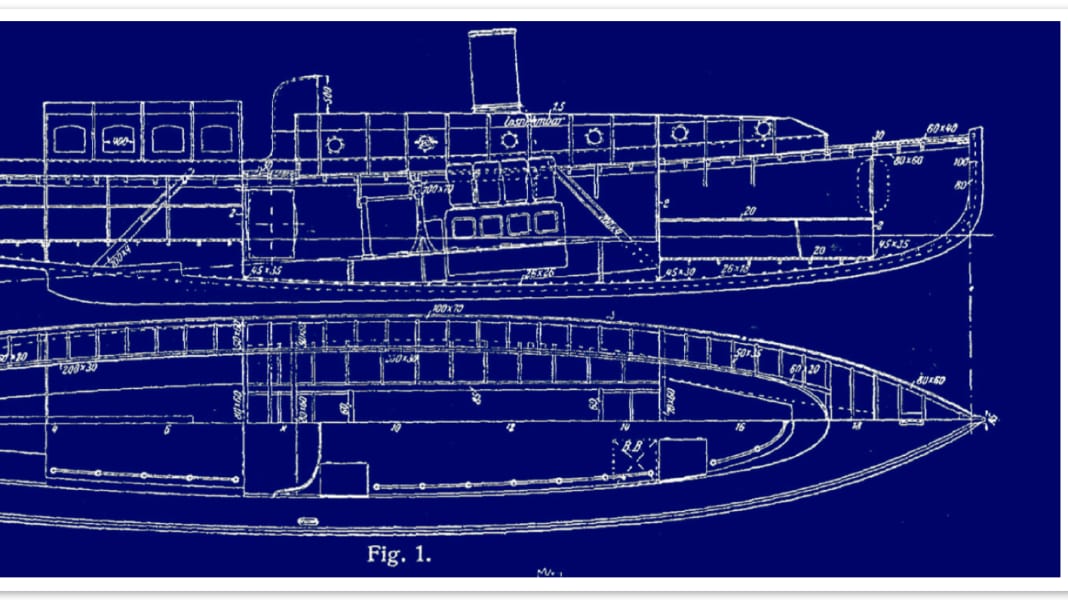
Around the turn of the century, Berlin and the surrounding area established themselves as a shipyard centre, while the North German honour was saved by the Bremen area with shipyards such as Rasmussen, Lürssen, Vertens & Co and Roland. While the people of Bremen were rather reserved in their advertising, the Berliners were less distinguished.
The Spreewerft shipyard advertised "Medas boats are known as first-class products", and the Siegfried shipyard promised to be a "specialist for motorboats of all kinds". Among the successful shipyard founders were the Engelbrecht brothers in Berlin-Köpenick, who mainly built so-called saloon motor yachts. The mini-predecessors of today's megayachts, if you like.
Individual items were sold according to customer requirements because there was no mass movement like in the USA. The customers were mainly well-heeled people who wanted to drive a status symbol. The Kaiser was the role model. As a result, the first German motorboat clubs were considered elitist. First and foremost was the first Motor Yacht Club of Germany in Berlin, sponsored by Wilhelm II in 1907 and still in existence today, which was later allowed to display a golden crown on its black, white and red club pennant by imperial cabinet order as a sign of its unique position.
That's a commitment, of course. Vice Admiral Excellency Aschenborn and Adalbert Graf von Sierstorpff resided on the board. Incidentally, Paul Daimler, Gottlieb Daimler's eldest son and technical director of Daimler Motoren-Gesellschaft Berlin-Marienfelde until 1922, was also a member of the official representative committee.
One of the leading designers of the time was Artur Tiller, who described individual yacht construction in his "Handbuch des Wassersports" (Manual of Water Sports) as follows: "The designer must carefully weigh up the various requirements of the client for each new design."
At this point, it is already clear that a wide variety of boat designs dominated the "oceans". There was no trace of series production à la Chris-Craft. In terms of design, there were no major differences to American designs.
Open sports boats, known as "runabouts" in America, usually had two separate seating units. One at the front with the steering position and one completely aft behind the engine installed amidships. Semi-decked and decked motor cruisers, remotely comparable to today's cabin cruisers.
The semi-covered boat with a fixed foredeck was offered as an autoboat. If it had a folding top and retractable side windows, it was a "yacht cabriolet". Further developed, it was sold as a "yacht saloon". A type of boat in Germany with a cabin, which, however, was not intended for living and sleeping, as is common today, but for shorter pleasure trips.
The end of the First World War marked a turning point in design. Now the rather ugly gondolas were transformed into presentable little ships. The forecastle replaced the box-shaped cabin superstructure. The cabin was now located under the raised foredeck, known as the forecastle. These are all boats that can still often be seen at classic car meetings today. However, the proud German free-ship fleet was largely destroyed in two world wars.
Between 1914 and 1918, large yachts were forced to serve as "auxiliary cruisers". During the Second World War, the Wehrmacht requisitioned motorboats and forced German shipyards to build boats for the war effort. These included Claus Engelbrecht, who was ordered to build torpedo boats, and Max Schönherr, who was tasked with building lifeboats for the navy.
The Rambeck shipyard in southern Germany was not spared either - the army high command "commissioned" 150 assault boats, among other things, and the shipyards in the USA were just as stressed. How could it be otherwise, the largest national shipyard on the home front was "fighting" in the front line.
Chris-Craft mainly built so-called "Army Command Boats", "Air Rescue Boats" and landing craft. These LCVRs (Landing Craft Vehicle Ramp) were also used on the Normandy coast in 1944. In contrast to German boat builders, Chris-Craft was allowed to continue building his leisure fleet on the side: the 25-foot Sportsman was built in 1940, three runabouts in 1941 and a 16-foot hydroplane with a "torpedo-bug design" to reflect the war situation.
PART 4 will follow. However, you can already watch the entire report in the current July issue of BOOTE which is now available at newsagents.

